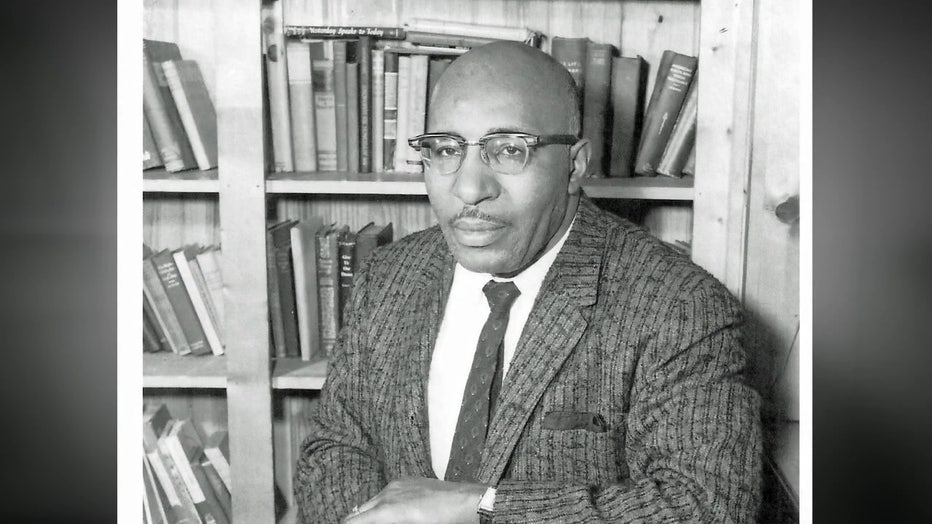Tampa’s Path to Equality Part 6: The 'Tampa Technique'

Tampa?s Path to Equality Part 6: The 'Tampa Technique'
In 1960, Tampa benefited from having the first southern governor to denounce segregation, the first mayor to help integrate the lunch counters and black and white community leaders who helped keep the peace. Craig Patrick reports.
TAMPA - Tampa is celebrating the anniversary of its first sit-in at the end of Black History Month.
On February 29, 1960, peaceful protests of segregation helped take down Jim Crow Laws in Tampa, and inspired efforts to integrate lunch counters across the nation.
In 1960, Tampa benefited from having the first southern governor to denounce segregation, the first mayor to help integrate the lunch counters and black and white community leaders who helped keep the peace.
Tampa also had one of the most successful hubs of black-owned businesses and neighborhoods south of Harlem along Central Ave.
What they're saying:
"Central Avenue was the mecca of black businesses," said Arthenia Joyner, who participated in Tampa’s sit-ins.
That is, until the powers-that-be decided to build the interstate through the community. Many of the properties around Central Ave. were condemned.
"It was just a dream for me to have that exposure as a kid. And it was all gone," Joyner said.
READ: Tampa’s Path to Equality Part 4: The Sit-ins
Stores and homes ran down, good paying jobs were scarce and black families struggled to get loans from banks to shop for homes elsewhere.
"There was something called redlining," said civil rights historian Dr. Steven Lawson. "They've literally circled areas where blacks would not have access to."

Tampa’s Path to Equality Part Six: The 'Tampa Technique'.
Resentment simmered until it exploded. Riots broke out on June 11, 1967, after police shot and killed a fleeing robbery suspect.
At the time, Tampa NAACP leader Bob Gilder said, "I feel there are many causes. This (police shooting) is just the straw that broke the camel’s back."
Fires and looting destroyed or heavily damaged much of Central Ave. that remained.

Riots broke out on June 11, 1967, after police shot and killed a fleeing robbery suspect.
Tampa forgot how it became the nation's bellwether for race relations just seven years before. It lost sight of what the rest of the nation called the ‘Tampa Technique’.
"The ‘Tampa Technique’ was a product of people who cared and who believed and reasoned and believed in dialog," Dr. Lawson said.
READ: Tampa's Path to Equality Part 2: The Awakening
Rev. A. Leon Lowry, who helped integrate the lunch counters in 1960, helped negotiate another period of progress and peace.

Rev. A. Leon Lowry
The city withdrew forces and trusted young men who lived in the reeling community to help restore order.
The riots played out, law enforcement policies changed and Tampa committed to increased job training and other investments.
They also re-learned the value of dialog, negotiation and nonviolent resistance.
"You've got to have people who are making themselves heard and present. And then you hope a kind of ‘Tampa Technique’ will resolve these issues," noted Lawson.
What's next:
The ‘Tampa Technique’ and the story behind the city’s civil rights movement is now playing out on stage in a play called, ‘When the Righteous Triumph."
In 2025, the producers at Stageworks partnered with the Straz Center to host it at the Jaeb Theatre starting on March 6.
In the final part of his series, FOX 13's Craig Patrick meets the writer and cast, and shows how the lessons of Tampa's sit-ins can inspire more positive change.
CLICK HERE:>>> Follow FOX 13 on YouTube
The Source: Information for this story was gathered by FOX 13's Craig Patrick.
STAY CONNECTED WITH FOX 13 TAMPA:
- Download the FOX Local app for your smart TV
- Download FOX Local mobile app: Apple | Android
- Download the FOX 13 News app for breaking news alerts, latest headlines
- Download the SkyTower Radar app
- Sign up for FOX 13’s daily newsletter

